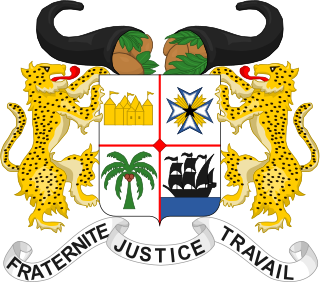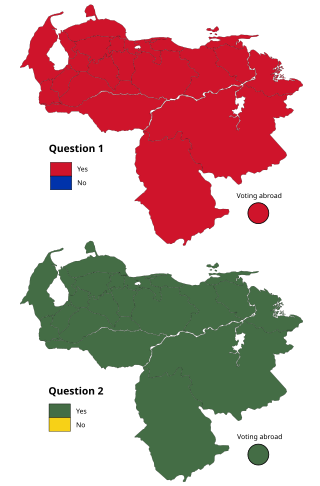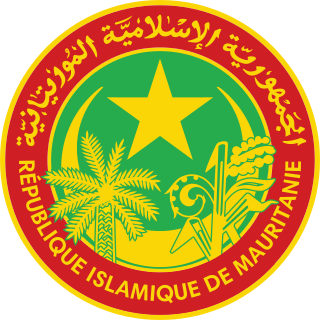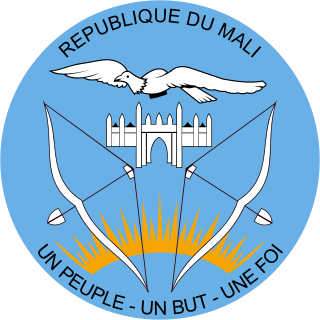
The Constitution of the Republic of China is the fifth and current constitution of the Republic of China (ROC), ratified by the Kuomintang during the Constituent National Assembly session on 25 December 1946, in Nanking, and adopted on 25 December 1947. The constitution, along with its Additional Articles, remains effective in ROC-controlled territories.

A constituent assembly is a body assembled for the purpose of drafting or revising a constitution. Members of a constituent assembly may be elected by popular vote, drawn by sortition, appointed, or some combination of these methods. Assemblies are typically considered distinct from a regular legislature, although members of the legislature may compose a significant number or all of its members. As the fundamental document constituting a state, a constitution cannot normally be modified or amended by the state's normal legislative procedures in some jurisdictions; instead a constitutional convention or a constituent assembly, the rules for which are normally laid down in the constitution, must be set up. A constituent assembly is usually set up for its specific purpose, which it carries out in a relatively short time, after which the assembly is dissolved. A constituent assembly is a form of representative democracy.

Elections in Benin take place within the framework of a multi-party democracy and a presidential system. Both the President and the National Assembly are directly elected by voters, with elections organised by the Autonomous National Electoral Commission (CENA).

Elections in Niger take place within the framework of a semi-presidential system. The President and National Assembly are elected by the public, with elections organised by the Independent National Electoral Commission (CENI).

Legislative elections were held in France on 10 November 1946 to elect the first National Assembly of the Fourth Republic. The electoral system used was proportional representation.

Legislative elections were held in France on 2 June 1946 to elect the second post-war Constituent Assembly designated to prepare a new constitution. The ballot system used was proportional representation.

Legislative elections were held in France on 21 October 1945 to elect a Constituent Assembly to draft a constitution for a Fourth French Republic. A total of 522 seats were elected through proportional representation; women were allowed to vote for the first time.

A constitutional referendum was held in France on 21 October 1945. Voters were asked whether they approved of the Assembly elected on the same day serving as a Constituent Assembly, and whether until a new constitution was approved, the country would be governed according to a proposed set of laws that appeared on the ballot paper. If the first proposal had not been approved, the Third Republic would have been restored, but its approval led to the elected Assembly drafting a constitution and proposing it to the people a year later, resulting in the creation of the Fourth Republic. Both were approved by wide margins with a turnout of 79.8%.

A constitutional referendum was held in France on 13 October 1946. Voters were asked whether they approved of a new constitution proposed by the Constituent Assembly elected in June. Unlike the May referendum, which saw a previous constitutional proposal rejected, the new Constitution of 27 October 1946 was accepted by 53% of voters, and brought the Fourth Republic into existence. Voter turnout was 68%.

A referendum on the method of the election of the president was held in France on 28 October 1962. The question was whether to have the President of the French Republic elected by direct popular vote, rather than by an electoral college. It was approved by 62.3% of voters with a 77.0% turnout. The reform was controversial because it strengthened the executive at the expense of Parliament, and because of the disputed constitutionality of the procedure used.

A constitutional referendum was held in Venezuela on 15 December 1999. Voters were asked whether they approved of the new constitution drawn up by the Constitutional Assembly elected earlier in the year. It was approved by 72% of voters, although turnout was only 44%.

A constitutional referendum was held in Egypt on 19 March 2011, following the 2011 Egyptian revolution. More than 14 million (77%) were in favour, while around 4 million (23%) opposed the changes; 41% of 45 million eligible voters turned out to vote.

A referendum on convening a Constituent Assembly was held in Venezuela on 25 April 1999. It was promoted by President Hugo Chávez, with voters asked two questions on convening a National Constituent Assembly and how that body should be elected. Both proposals were approved by over 80% of voters.

A referendum on becoming a republic was held in Bulgaria on 8 September 1946. Official results showed 96% in favour of the change against only 4% in favour of retaining the monarchy, with voter turnout reported to be 92%. The monarchy had effectively ended soon after the coup of 9 September 1944, which saw the Fatherland Front seize power. At that time, the regency council for the head of state, Tsar Simeon II, was replaced by a new council made up entirely of members of the Bulgarian Communist Party, the dominant force of the Fatherland Front.
A constitutional referendum was held in Portugal on 19 March 1933. A draft of the Constitution had been published one year before and the public was invited to state any objections in the press. These tended to stay in the realm of generalities and only a handful of people, less than 6,000, voted against the new constitution. With its passage, women were allowed to vote for the first time in Portugal and given a voice in the National Assembly.
A referendum on creating administrative regions was held in Portugal on 8 November 1998. Two proposals were put to voters, the first on implementing the regions, and the second specifically asking whether voters approved of the new region for their area. The proposals were rejected by wide margins by voters.

A constitutional referendum was held in Mauritania and Senegal on 21 October 1945 as part of the wider French constitutional referendum. The first question on the new French National Assembly serving as a constituent assembly was approved by 99% of voters, but the temporary constitution proposed in the second question was rejected by 51% of voters. Both proposals were approved in the overall vote. Voter turnout was 60%.

A constitutional referendum was held in French Sudan and Niger on 21 October 1945 as part of the wider French constitutional referendum. The first question on the new French National Assembly serving as a constituent assembly was approved by 97% of voters, whilst the temporary constitution proposed in the second question was approved by 86% of voters. Both proposals were also approved in the overall vote. Voter turnout was 79.3%.
The French Constituent Assembly of 1945, also referred to as the First National Constituent Assembly, was a Constituent assembly elected after the 1945 French legislative election to draft a draft Constitution to be approved by the French people via referendum. This referendum, held on May 5, 1946, resulted in the rejection of the proposal, prompting the organization of new elections for a Second Constituent Assembly of 1946.
The Draft French Constitution of 19 April 1946 was the constitutional text drafted by the first Constituent Assembly elected under the Constitutional Law of 1945. This draft constitution was approved by the deputies on 19 April 1946 with 309 votes in favor and 249 against and subsequently submitted to a referendum on 5 May 1946. On this occasion, the electorate rejected it with 52.82% voting against.














